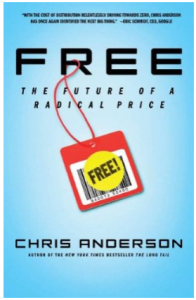Software will be free
“The price of software should be zero”.
It is not my opinion or a religious conviction. It is the law of economics. In any competitive market the price of any product will move towards the cost of producing an additional unit (the marginal cost).
What is the marginal cost of producing one additional copy of a software product?
There is one additional condition, which must be fulfilled for the “law of economics” pushing the price of software towards zero: Perfect competition.
The proliferation of the Internet has created market conditions in certain areas, which are closer to “perfect competition” than anything we have seen so far ever in the history of mankind.
A barrier to customer acquisition
There is a second compelling reason for the price of software to move towards zero:
Price is a barrier to customer acquisition.
If your marketing cost are very low (which is very possible using the web for promotion of certain products and services) why should you prohibit “customers” using your software by asking a price? Asking no price will give you many more “customers”, who can tell other “customers” how great your software is. Your cost of serving the “customers” through the cloud are very very low.
In a world that moves extremely fast, fast market penetration is crucial and the benefit of being the market leader still prevails. “Free” is a great lubricator for rapid dissemination and for reaching the position as the market leader before your competitors.
So where is money going to come from?
If you ask that question then you must read the book “Free” by Chris Anderson. There is no need for me to repeat all the versions of and sound reasons for making software free. Chris Anderson covers this subject brilliantly in his book.
The marginal cost of support, customization, consulting, integration, development etc. is not zero. Any software company can and will “differentiate” their products providing value customers want and cannot get elsewhere. This is where you can charge a price and ultimately make money. But there are other business models too – READ THE BOOK!
A spreadsheet exercise
If you are a software company operating entirely on the Internet, “free” is probably already a central part of you customer acquisition strategy. “Free” seems to be in the DNA of any cloud based software company. All cloud based software businesses are “spreadsheet driven”. They meticulously model and monitor the acquisition, conversion processes and ratios. They do split testing on marketing messages and constantly optimize Adwords, SEO, syndication, affiliate programs etc.
If you operate “off-line” (so to speak) you should also consider how you can lower the barrier for customer entry. Software companies operating “off-line” typical have comprehensive or niche products with high price tags, long value chains and long sales cycles. Let’s assume that your average price tag is EUR 1M, the average sales cycle is 18 months and the cost of sales EUR 300K. Take a spreadsheet too, model your sales process and calculate the implications of reducing the sales cycle with 1, 2, 3, 4, 5, 6, 7, 8, 9, 10, 11, 12 months. Now consider what you can do to make that happen. Take the best 2-3 ideas, implement them and test them. Measure the outcome and repeat the exercise for ever and ever and ever.









